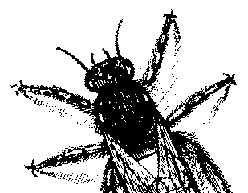Updated June 3, 1998 Say What?Line Noise: The New Buzz Phrase In V.90 Modem Distress
Consider the recent case of a high ranking executive at 3Com, a pioneer in high speed modems and V.90 specifically. This 3Com exec recently took his new 3Com US Robotics 56.6 Kbps V.90 modem home with him and plugged it into his extensive residential system. To his chagrin, he discovered he wasn't getting close to the 56.6 speed he expected. In fact, he was only getting 33.3 Kbps. 3Com's modem gods were summoned to the exec's house to troubleshoot the system, and here's what they discovered: It turned out the guy was a neatness freak. He had bundled all his power and connecting cords together and then jammed them into a compartment next to the V.90 modem. The result? He created a localized electrical field which degraded the phone signal coming in, and forced his V.90 modem to downshift to 33.3 Kbps. The "line noise" caused by this inadvertent electrical field wasn't severe enough to affect his older, slower modem, but it put a major whammy on his new 56.6 Kbps V.90 modem. YOU MAY not have heard much about line noise yet, but you will. Line noise is the new buzz phrase in V.90 modem complaints because it can significantly affect the performance of the fast new modems. And like cancer, line noise spares no one. You can have the slickest system with the fastest modem in the best part of town, and still be struck down to 33.3 Kbps or slower. According to 3Com, the line noise problem currently cripples something less than 10 percent of all V.90 modems in the United States. 3Com's goal is to reduce this number to 4 percent in the U.S., but it acknowledges that the number will never reach zero. In other words, there will always be purchasers of V.90 56.6 Kbps modems who will not get 56.6 Kbps, and outside the U.S. the V.90 speed problem is much more common. Here's why: an estimated 80 percent of all line noise problems have their origin in the home or office where the modem is located, a la the neatness freak 3Com exec. Many of these difficulties can be resolved on a case-by-case basis, but meanwhile their number continues to grow as more interior phone line installation is done by people who aren't telco professionals (isn't deregulation fun #1,256). THE REMAINING causes of the line noise are outside the home/office in the user's telco. Although they account for only about 20 percent of all line noise problems, they are largely incurable, and entirely invisible to the user. Frequently they stem from decisions that the user's local telephone service provider has made for voice call purposes. Take "channelized T1" or "pair gain" devices, for instance. These are technologies that are used by telcos to quickly and relatively cheaply expand phone service, particularly in high growth areas. Channelized T1 makes great sense from a voice call standpoint, but it can totally torpedo high speed modems like the V.90 if it adds another digital to analog signal conversion to the line. "Trunk-side" implementations of channelized T1 are good, but "line side" implementations of channelized T1 are bad from the standpoint of fast modems. "I wish people would check out these fast modems before they buy them," a GTE service representative in Washington State told BugNet. "With normal phone service, the fastest speed people are going to get on our system (GTE in area code 360) is 24.4 to maybe 28.8 Kbps. It doesn't matter what it says on the modem box. 56.6 isn't going to happen -- not even close." AND IT GETS worse. Consider the case of Steve Marsh, a sophisticated user who teaches computer science at the Seattle Hebrew Academy. He bought a new 3Com US Robotics 56 Kbps V.90 WinModem and found that it only connected at 28.8 Kbps. Fifty dollars in tech support calls to 3Com later, he was told he had a line noise problem. After three service calls from his telephone service provider, US West, he was informed that there was nothing that could be done about the line noise. He was stuck in the digital slow lane. But get this: his old modem connected at 33.3 Kbps, which is faster than his new "high speed" V.90 modem can manage. So he actually he ended up paying $100-plus to 3Com for a new modem, $50 to 3Com for tech support, and countless hours of his time -- ALL TO GET SLOWER MODEM SPEEDS THAN HIS OLD 33.3 KBPS MODEM! "It leaves me very frustrated to have just spent over $100 for an industry standard 56.6 modem that is only connecting at 28.8," said Marsh. Unfortunately, thousands of V.90 users world-wide are going to find themselves in the same predicament. THERE ARE, however, several things that users can do to get a handle on line noise. First, check the speed of your modem connection by right clicking the modem icon in the bottom right corner of your Windows 95 / Windows NT screen. If this test reveals that your new 56.6 V.90 modem is cruising at less than 56.6 Kbps, try the following:
-- Bruce Brown
© BugNet material copyright 1994-1999 by BugNet. This historic replica of BugNet from the period 1994-1999 BF Communications Inc. Website by Running Dog
|
|||||





 FOR
MONTHS BugNet has been hearing complaints that
the new high speed modems, especially the newest 56.6
Kbps V.90 modems, don't really deliver the speed they
promise.
FOR
MONTHS BugNet has been hearing complaints that
the new high speed modems, especially the newest 56.6
Kbps V.90 modems, don't really deliver the speed they
promise.
